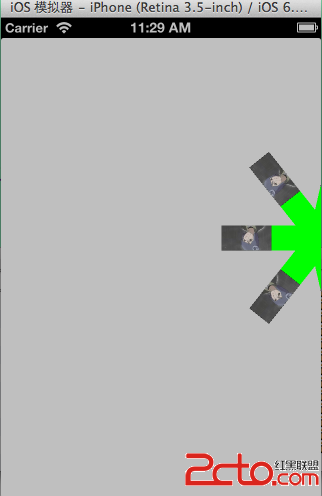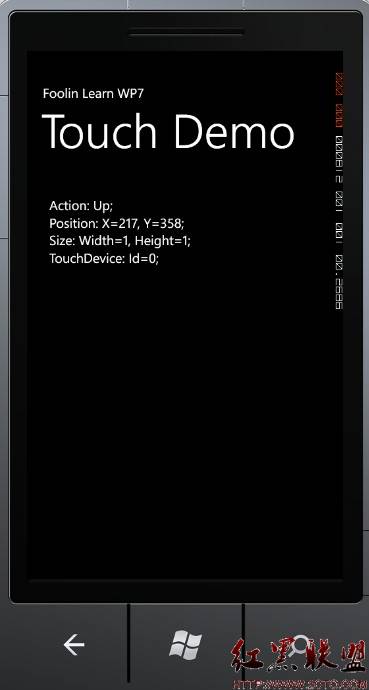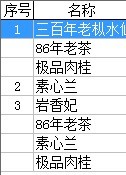IOS NSString 用法详解
//NSString 操作均不改变自身值
//构建字符串
NSString *szTmp = @"A string"; //直接赋值
szTmp = nil;
int n = 5;
NSString *szMyString = [NSString stringWithFormat:@"The number is %d",n]; //The number is 5
[szMyString stringByAppendingFormat:@"%d",22]; //附加字符串返回值:The number is 522
//但是szMyString本身并没有改变,其值依然:The number is 5
[cpp]
//长度与索引字符
NSLog(@"%d",szMyString.length); //字符串长度:15
NSLog(@"%c",[szMyString characterAtIndex:2]); //返回字符:e
[cpp]
//与c字符串相互转换
printf("%s\n",[szMyString UTF8String]); //转为__strong const char *
const char *szTmp1 = [szMyString cStringUsingEncoding:NSUTF8StringEncoding];
printf("%s\n",szTmp1); //转为__strong const char *
NSLog(@"%@",[NSString stringWithCString:szTmp1 encoding:NSUTF8StringEncoding]); //转为nsstring
[cpp]
//字符串写文件
NSError *error;
NSString *szPath = [NSHomeDirectory() //应用程序沙盒路径
stringByAppendingPathComponent:@"Documents/testFile.txt"]; //附加路径地址
if (![szMyString writeToFile:szPath atomically:YES //atomically:是否是原子访问文件的
encoding:NSUTF8StringEncoding error:&error]) { //写入成功返回yes 否则no
NSLog(@"Error writing to file :%@",[error localizedDescription]); //输出错误描述
return 1;
}
NSLog(@"File write success");
[cpp]
//文件读字符串
NSString *szInString = [NSString stringWithContentsOfFile:szPath //读取文件信息
encoding:NSUTF8StringEncoding error:&error];
if (!szInString)
{
//失败
}
NSLog(@"%@",szInString); //成功
[cpp]
//字符串转为数组
NSArray *arrayWord = [szMyString componentsSeparatedByString:@" "]; //有空格的拆分为单词保存
NSLog(@"%@",arrayWord);
[cpp]
//索引子串
NSString *szSub1 = [szMyString substringToIndex:3]; //0-2,前3个:The
NSLog(@"%@",szSub1);
NSString *szSub2 = [szMyString substringFromIndex:4]; //4-尾,去掉前4个:number is 5
NSLog(@"%@",szSub2);
[cpp]
//范围索引
NSRange range;
range.location = 4; //从4开始
range.length = 6; //6个字符
NSString *szSub3 = [szMyString substringWithRange:range]; //number
NSLog(@"%@",szSub3);
[cpp] view plaincopy
//搜索与替换
NSRange rangeSearch = [szMyString rangeOfString:@"is 5"]; //搜索
if (rangeSearch.location != NSNotFound) { //搜索不到是 NSNotFound
//成功:rangeSearch.location;//位置 rangeSearch.length;//长度
}
NSLog(@"%@",[szMyString stringByReplacingCharactersInRange:rangeSearch //用位置匹配替换
withString:@"isn't 10"]);
NSString *szReplaced = [szMyString stringByReplacingOccurrencesOfString:@" " withString:@"*"]; //匹配字符串替换
NSLog(@"%@",szReplaced);
[cpp]
//改变大小写
NSLog(@"%@",[szMyString uppercaseString]); //大写
NSLog(@"%@",[szMyString lowercaseString]); //小写
NSLog(@"%@",[szMyString capitalizedString]); //首字母大写
[cpp]
//比较字符串
NSString *sz1 = @"Hello World!";
NSString *sz2 = @"Hello Mom!";
if ([sz1 isEqualToString:sz2]) {/*相等*/}
if ([sz1 hasPrefix:@"Hello"]) {NSLog(@"前部分相等");} //从头开始比较
if ([sz1 hasSuffix:@"d!"]) {NSLog(@"后部分相等");} //从尾部比较
[cpp] view plaincopy
//字符串转换数字
NSString *szNumber = @"3.14";
[szNumber intValue];
[szNumber boolValue];
[szNumber floatValue];
[szNumber doubleValue];
[cpp] view plaincopy
//可变字符串
NSMutableString *szMuMyString = [NSMutableString stringWithString:@"Hello"];
[szMuMyString appendFormat:@"World"]; //字符串,改变自身
[szMuMyString uppercaseString];
NSLog(@"%@",szMuMyString);
补充:移动开发 , IOS ,




